There are hundreds of marketing channels to choose from. Which one’s the best for your business? Which one can bring you the highest return on your time, energy and money?
Unfortunately, there’s no one size fits all marketing plan. What brings in droves of customers for one company might be complete flop for another. The key to making marketing work is to pinpoint the best marketing channels for your product and your audience. Then, test quickly to find out what works, and scale up the channels that do the best.
With that in mind, let’s take a look at the 18 highest ROI marketing channels. For each channel, I’ll give a brief overview of how it works, as well as its pros and cons, and a description of which type(s) of businesses should or shouldn’t use it.
Cold Email Outreach
Believe it or not, cold outreach works. It’s actually extremely effective. For a detailed example, Predictable Revenue is a book that outlines how Salesforce added $100 million a year in recurring revenue using this strategy.
Here’s how it works. You use a database provider like Data.com to find prospects. You can get pretty detailed with this. For example, you can target retailers with at least $10m in revenue, or people with the title “VP of Product” in tech companies with at least 50 people.
Alternatively, you can pay someone to find email addresses for you. For example, you can scrape Yelp for all the Irish pubs in New York. One of the best tools is to use hunter.io to find email addresses on a website (free tool.)
Once you have the email addresses, you can use an automated tool like Quickmail.io to send emails out to the list of people who match your criteria. About 1% of your cold emails should turn into warm leads, contacts, and product demos.

Who Should Use This Channel?
Best For: This channel should only be used when selling to businesses. Typically this works best for businesses that are selling higher ticket products, usually with a $5,000+ lifetime customer value.
This channel only works when combined with a salesperson, so you need to take into account both the cost of both generating the lead, as well as hiring the sales team.
Not For: This channel shouldn’t be used for selling to consumers. For one, it’s illegal to email consumers without permission, because of CAN SPAM laws. It’s also not worth the time and effort to make a $30 sale.
Google AdWords
Google generates over $60 billion a year in advertising revenue for one simple reason: their ads work. They make businesses money, so more and more businesses spend money with them.
AdWords works by letting you bid on keywords. Your text ads then show up for the keywords you’re bidding on.

Who Should Use This Channel?
Best For: This channel works best for locating people with buying intent. If someone is searching for pearl jewelry, they’re probably looking to buy pearl jewelry. AdWords works for a very wide range of businesses, and most startups should at least experiment with AdWords to see if it works for them.
Not For: Products with low search volume, especially if there’s a large group of prospects that aren’t necessarily searching for that product. For example, let’s say you’re selling funny t-shirts for people who love their dogs. Every month, only about 3,000 search for “dog shirts” in Google. However, there are millions of dog lovers in the country. They might not know to search for a dog shirt, but if they saw a funny one, they might buy.
In this case, another channel that lets you target by interest (dogs) rather than by buying intent might work better. You’ll have to create buying intent rather than find buying intent, but instead of advertising to 3,000 people you can advertise to millions.
Facebook Advertising
Facebook has a better interest targeting platform than anyone else on the planet. Unlike banner ads, these ads are in locations people are trained to pay attention to: the newsfeed. This results in much higher click through and conversion rates.
Facebook’s targeting works very differently than AdWords. Instead of targeting based on keywords, you target based on interest. Instead of targeting based on what people are looking for, you target them based on what they’re interested in.

Who Should Use This Channel?
Best For: Facebook works best when you have a message or product that can appeal to an entire group of people. For example, anyone who loves cooking, or software business owners, or women who like to cycle.
Like AdWords, Facebook is a channel that most businesses should experiment with at some point.
Not For: Products that can only be purchased at a specific point in time. For example, let’s say you love to play ping pong (table tennis.) Even though you’re a diehard fan, the reality is you’re only going to buy a ping pong table once every few years. So even if a ping pong table company showed ads to you, you won’t buy – because you’d only purchase at a specific point in time. It would be better for them to bid on AdWords and wait for you to search for a ping pong table, rather than try and get you to buy one now.
Facebook Ads is also not good for brand awareness and brand lift campaigns. The ad rates are much higher than other channels like TV, and the impact on brand is traditionally lower per dollar spent than more traditional channels.
Search Engine Optimization
SEO is one of the go-to marketing channels for most business owners when they’re first getting started. But the truth is, SEO only works for a very small subset of companies.
While successful SEO can bring in a ton of free traffic, succeeding in SEO is difficult. There’s only one #1 position for any given keyword, so you’re competing with every company in the world for that particular keyword. While it’s possible to win this fight, it’s not a fight new companies should pick.
SEO should generally be tackled by established companies, once they’ve already made a few other marketing channels work.
Who Should Use This Channel?
Best For: Businesses that publish a lot of written content. Also best for businesses with other marketing channels. SEO tends to work best for businesses with substantial marketing budgets, and entrepreneurs with existing marketing experience.
Worst For: Businesses that don’t have content, or for whom writing content doesn’t make sense. For example, if you sell cheap iPhone cases, people don’t necessarily want to read about the iPhone case – they just want to buy one.
Don’t bet the company on SEO, especially in the beginning. SEO takes time and money to develop. Work on your SEO as you also build out other channels, so faster acting channels can bring in revenue while you slowly increase your rankings.
Google Display Network
Google Display Network, or GDN for short, is the world’s largest platform for purchasing display ads. Using GDN, you can place banner ads on any website that’s making money using Google AdSense.
Unlike AdWords, the targeting for GDN is based on the content of the web page. If you’re advertising home furniture, your ads will most likely show up on home furniture sites. You can use keyword targeting, interest targeting, or specific website targeting to run your ads.

Who Should Use This Channel?
Best For: This channel is best thought of as a scaling channel. Scale up to GDN once other channels are profitable, but typically Facebook Ads will convert better for display ads than GDN. Retargeting also tends to do well on GDN.
Not For: Not for testing new ad campaigns or offers. If you’re launching a new product or offer, and it doesn’t work on GDN, it’ll be difficult to say whether it’s an issue with your product or an issue with the channel.
Google Shopping Ads
Google Shopping is one of the most effective channels for selling physical products. If you’re selling a physical product, you should be on Google Shopping.
Google Shopping ads are the ad units with rows and rows of product images. These ads convert very well.
The only downside to Google Shopping is that it’s difficult to setup. You have to turn your products into a product feed, which can be quite technical. Most shopping carts – Shopify, Magento, etc. – have plugins that do most of the work. Even so, it’s still not as easy as AdWords or Facebook Ads.

Who Should Use This Channel?
Best For: If you sell physical products, especially low to mid priced, this channel should work well.
Not For: Digital products or services, or any product that’s not physical. It’s also difficult but not impossible to sell $5,000+ products via Google Shopping. Generally speaking, higher ticket items work better through other channels.
Private Lead Brokers
Lead and click brokers can be a very good source of clients, especially in established industries.
For lawyers, Avvo.com can be a great source of leads. For B2B software, Capterra.com is a popular lead gen site. For real estate agents, Trulia and Zillow are both well known lead sellers.
The downside to buying leads is that there are a lot of low quality lead sellers as well. Marketers should enter this market with skepticism.
In the beginning, it’s best to only do business with the Top 3 brokers in your industry. If you’re in real estate for example, buy leads from Trulia and Zillow first. This will allow you to benchmark their performance.
Then, if you venture outside of the Top 3, you can use your conversion and ROI metrics from the Top 3 to compare against less established lead brokers. Working with new brokers can be a great source of leads, as there’s often less competition for those leads. Just don’t start with them, as it’s entirely possible their leads won’t pan out.

Who Should Use This Channel?
Best For: industries where lead brokers consistently deliver results. A lot of industries don’t have lead brokers, so this strategy won’t work in every industry.
Worst For: Industries with no benchmarks. A real estate agent for example can use Google to figure out what percentage of their leads should turn into demos, and what percentage of demos should turn into sales. If you’re the first one in your industry using purchased leads, and you have to benchmark from scratch, it will be difficult to figure out if you’re on track.
Strategic Partnerships
One big strategic partnership can drive a massive amount of business.
A strategic partnership is a win-win deal between two companies that results in increased revenue for both parties. There’s no cookie-cutter type deal with these partnerships. Usually it involves leveraging the unique strengths behind both companies.
Here are a few examples of strategic partnerships:
- Google lets people order Lyfts directly from Google Maps. Lyft gets to take advantage of Google Maps’ massive user base.
- Delta gives away NatureBox snack bars for free on their flights. This gives NatureBox massive free exposure to Delta’s audience, some percentage of whom may become customers.
- Spotify gives students free access to Hulu. Hulu, of course, is hoping that students will get hooked on Hulu, so when they leave school they’ll decide to become a paying member.
- Postmates, a food delivery company in New York, partnered with a local pie shop to deliver free pies on Pi Day, driving exposure and press for both companies.

Who Should Use This Channel?
Best For: Companies with larger budgets. Often times arranging a partnership is a full time job, so you need to be able to afford a Head of Partnership role. In cities like New York, this is often a $60,000+ salary; so this strategy is often reserved for larger businesses. That said, a founder can definitely reach out and structure these kinds of win-win deals – just expect it to take a lot of time and attention.
Not For: “Unsexy” businesses. A janitorial service, for example, might have difficulty doing a strategic partnership.
Direct Mail
Yes, direct mail works, even in the 21st century. It works very well in fact – to the tune of $10 billion a year.
Direct Mail comes in many forms. Some companies send low quality prints, on newspaper-style paper, going for cheap scale. Others send high quality prints to carefully selected addresses. Both approaches work.
The key to direct mail is math. For example:
- The cost for printing, including the paper, is $0.40
- The price of the envelope and postage is another $0.40.
- The cost of the address itself, from an address broker, is $0.05 each.
- The total cost to send a letter is $0.85 each.
- After doing a test mailing, you find that the response rate is 1 out of 100, or 1%. That means your customer acquisition cost is $85.
- Your average customer lifetime value is $170, so you make a 50% ROI on the spend.

Who Should Use This Channel?
Best For: Products with higher lifetime value. It’s difficult to make a $3 product work via direct mail. This also works best in “major” industries, as you’ll have more address lists to work with. A good rule of thumb is the Magazine Rule: if there are at least 2 magazines in the bookstore catered to an audience you can sell to, then direct mail could work.
Not For: Niche industries that don’t have address lists you can buy. For example, life coaches probably shouldn’t use direct mail, as you can’t buy a list of people who’re looking for a life coach.
Press and PR
Press is one of the most common marketing channels businesses tend to go for. In addition to the traffic, there’s a lot of prestige that comes from being featured.
PR is a “feast or famine” channel. If you can get into one or two publications, getting into another 5-10 is quite easy. But getting the first few writeups can be challenging.
Generally I’d recommend most companies not to chase PR unless it comes to you first. Once you’re doing something that’s naturally attracting PR, then it makes sense to go out and solicit more. But spending money on PR agencies before you have a marketable story can be a big drain on cash, time, and energy.
Instead, focus on using other channels to generate your initial sales. Then, once you have enough traction that bloggers and journalists start writing about you on their own, put together a strategy to increase the flow of press.

Who Should Use This Channel?
Best For: Products that are very unique and head turning. It’s difficult to get a newspaper to write about a new hair salon, but very easy to get them to write about the world’s first artificially intelligent teddy bear.
Not For: Businesses or products that are similar to a lot of other products on the market.
Affiliate Marketing
Affiliate marketing is like hiring an army of commissioned salespeople to sell your product.
Usually, you start by listing your product on one of the affiliate marketing exchanges. The largest ones are Pepperjam and Commission Junction.
Then, affiliate marketers who’re on the platform find your product and promote it to their audience. When they make a sale, you pay them a commission. The whole transaction is tracked by the affiliate management software.

Who Should Use This Channel?
Best For: Markets where there are a lot of existing websites with large audiences. For example, weight loss, dating, marketing, fashion. Also, this tends to work for existing businesses – affiliate marketing shouldn’t be used as your first channel.
Not for: Markets without existing audiences. For example, if you’re selling dance inspired keychains, it’s unlikely that there are many people with large dance audiences on affiliate networks. Instead, you’re better off targeting dancers on Facebook Ads.
Refer a Friend Campaigns
Refer a friend campaigns can be extremely powerful. In fact, Blue Apron, a $500 million food company, gets almost half their revenue via refer a friend campaigns.
The idea is simple: create an incentive for people to refer their friends to your business. Make sure it’s a win-win for both them and their friends, as nobody wants to feel like they’re “selling out” their friends for profit.

Who Should Use This Channel?
Best For: When you can give away something that “feels” highly valuable. For example, Dropbox lets you give your friends 16 GB of free storage space. Blue Apron lets you give friends a free meal delivered to their door.
Not For: Businesses that have a “boring” product, or have a hard time giving away free product. It’s hard to give away a free Xerox machine.
Content Marketing
Content marketing means using content to both generate trust and bring in more traffic. Content marketing can be used to increase conversion rates by building trust, as well as to increase traffic via SEO and social media. MarketingStrategy.com is a content marketing business.

Who Should Use This Channel?
Best For: Products or problems that people are passionate about. Home beer brewing, digital marketing, and dating tips are all things people can spend hours a day on.
Not For: Products people don’t want to think about. For example, if you sell ballpoint pens, people don’t want to think about ballpoint pens – they just want to pick up a pack of 20 at Staples.
Native Advertising
Native advertising has two definitions:
1 – Integrated Marketing
Paying for advertising on a website, in the same format that the website is in. The ad is “native” to the website experience.
For example, this article, “12 Foods You Had No Idea Have This Much Protein,” is actually an ad paid for by Boca. The article features Boca’s veggie burger as part of the article. Since the ad format fits into the site’s format, this is one style of native advertising.
Pros: Very good for branding.
Cons: Negotiating these deals is a very manual process. CPMs are typically much higher than other ad platforms as well. It’s much harder to evaluate, negotiate, and sign five $10,000 deals than to just spend $50,000 on Facebook or AdWords.

2 – Native Ad Networks
The ad carousels on the bottom of news articles are also called Native Ads. These are typically brokered through ad platforms. The three main ones are Outbrain, Taboola, and Yahoo Gemini.

Pros: Massive scale. If you can get a campaign to work, it can generate a lot of revenue.
Cons: It’s very difficult to get ROI positive. A lot of testing is required. Also, these types of ads need a multi-step funnel and generally can’t go direct to product. So it’s a lot of work to make it work. For most companies, it’s best to start on Facebook or Google, then scale to native ads once other channels are working already.
Podcast Advertising
Podcasts are like radio, but on your phone. And you can listen to it at any time.
Unlike radio, shows can be much more “laser targeted.” Instead of having a radio for talk shows or love songs, podcasts can be very niche. There are podcasts for digital entrepreneurs, for crossfit enthusiasts, and for people who love their dogs.
Podcast ads let you get in front of a very passionate group of people. And you often get to leverage the connection hosts have with the audience – because the hosts are actually reading your ads for you.

Who Should Use This Channel?
Best For: Products that have a higher lifetime value. Most products that are successful in podcast ads are relatively high LTV. These include subscriptions, such as SquareSpace, or high ticket items, like Casper.
Not For: Low priced items, and single purchase business models. For example, if you sell a $20 iPhone case, it’s very difficult to make the economics of podcast ads work. Also, products that hosts don’t want to associate with their brand can be difficult to sell, because everything has to be approved by the host first.
Social Media Marketing
Social is both a powerful marketing channel, and a very misunderstood one. Newer businesses especially often get in trouble by only relying on social.
Social is generally not a new lead generator. Instead, social is a way to build relationships with your existing audience. You’ll get some traffic from people in your audience sharing with their networks, but it’s usually not a large amount.
Most startups should initially focus on one of the other more scalable marketing channels – Facebook ads, AdWords, etc. Then use social to amplify their efforts later down the line. But “we’ll do social media” is not a viable marketing strategy by itself.

Who Should Use This Channel?
Best For: Companies that post “share worthy content”. This is content that generates emotional reactions: “wow!” “aww,” “wtf” “yum” and so on.
Not For: Companies with everyday products. It’s hard for a company selling signage to make share worthy content.
YouTube Video Ads
YouTube video ads are very cheap relatively to Facebook Ads. While Facebook’s CPMs rose by 171% in 2017, YouTube’s ad rates have stayed relatively flat. Also, YouTube doesn’t charge you for ads if people skip before 10 seconds, while Facebook charges you for every impression.
In other words, YouTube ads are cheaper than Facebook. Which means the ROI can often be higher, as long as the CTR and conversion rates are similar.

Who Should Use This Channel?
Best For: B2C products, or lower market B2B products. For most products below $500, YouTube can be a good channel. Especially if it’s visual. You can sell physical goods, software, and services through YouTube ads.
Not For: Higher ticket sales. It’s difficult to sell a $1,000+ product via YouTube ads.
YouTube ads are also not good if you need to target a very specific audience of people. YouTube’s ad targeting is much worse than Facebook’s. So if you need to target heavy machine operators in Iowa, use Facebook. If you need to people who love dogs, both platforms would work.
YouTube Sponsorships
Want a funny, interesting, and high converting video, done without you having to do any video work? Look no further than YouTube. Thousands of YouTube personalities have already built up a large audience, and are looking for additional ways to turn that audience into money.
Although YouTubers can make money from the ads Google shows on their videos, it’s a small paycheck for the amount of traffic they get. So, they’re often interested – excited even – to do sponsorships for brands.
Who Should Use This Channel?
Best For: Brands in fashion, food, health, or any other industry that has a lot of YouTube personalities.
Not For: “Dry” products, products that don’t have a strong “wow!” factor. Also, keep in mind YouTube tends to be a younger audience, so typically businesses with a younger demographic do better.
Selling on Marketplaces (Amazon, uDemy, etc.)
You don’t always have to build your own traffic from scratch. Instead, you can leverage existing marketplaces to jump start your sales.
If you’re selling a physical product, Amazon can bring in a lot of revenue. If you’re selling software, consider the Apple App store. If you’re selling a training course, listing your program with uDemy or Lynda can get you a lot of exposure.
There are marketplaces in almost every industry. These are sites with a high volume of existing traffic that you can take advantage of. Instead of having to get customers from scratch, you can instead focus on increasing your rankings within these marketplaces.
Usually this comes down to reviews, keywords and sales. Make sure to study up on how your specific marketplace works before listing. For example, Google “how to improve Etsy rankings” and study everything you can about how the ranking algorithm works before you start selling products there.

Who Should Use This Channel?
Pros: Allows you to tap into a large base of existing buyers.
Cons: Typically margins are much lower. You’ll be forced into price competition with other sellers on the marketplace. Also, you don’t own the direct customer relationship, which could cause problems for your business later down the line.
Marketplaces are usually a good jumpstart, but long term you’ll want to build your own relationships with customers.
Choosing Your Marketing Channel
Which marketing channel would work best for your business?Hopefully, this article gave you some ideas as to where to start looking.
It’s impossible to say without testing which would work best. A good approach is to pick 2-3 that you think make sense for your business, and start testing. Take the one that worked best and scale it up.
What’s your favorite marketing channel? Share your thoughts in the comments below!
Ian Luck
Founder, MarketingStrategy.com

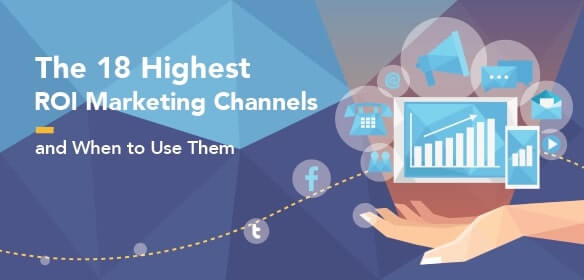



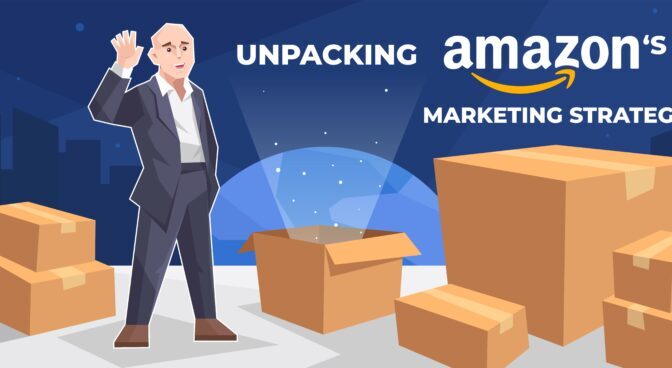
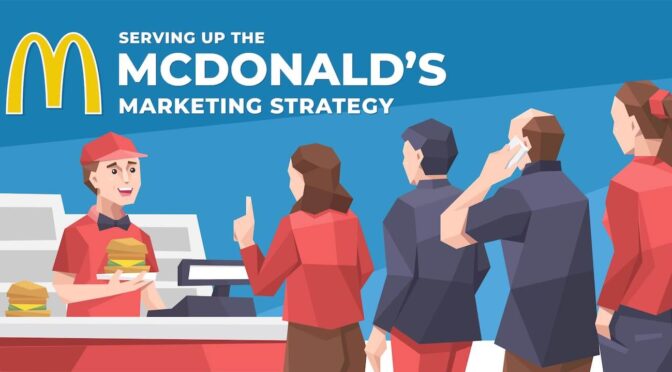
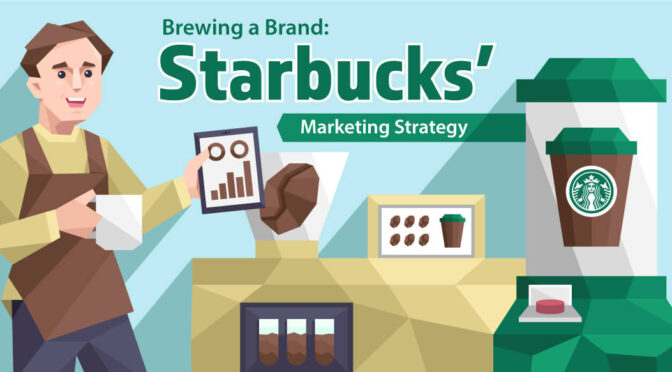
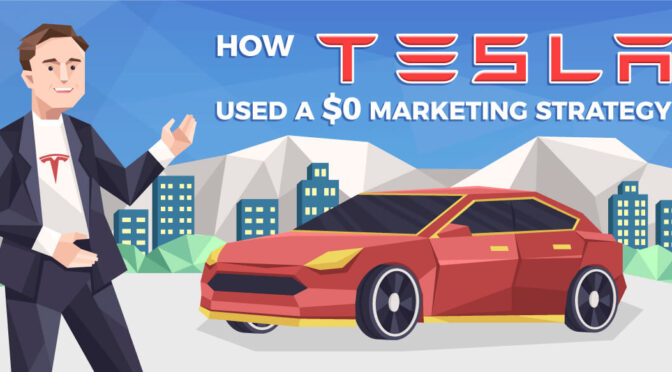











nice article on online marketing.
What an interesting read, thanks for sharing
What an excellent read – thank you for posting
A very concise, well researched, and well-written article. Kudos!
Title
ConsultantSpecialties
I agree with most of these, it all depends on what type of company you are. For example, an ecommerce company may have more luck with certain channels than a B2B SaaS startup, it all depends.